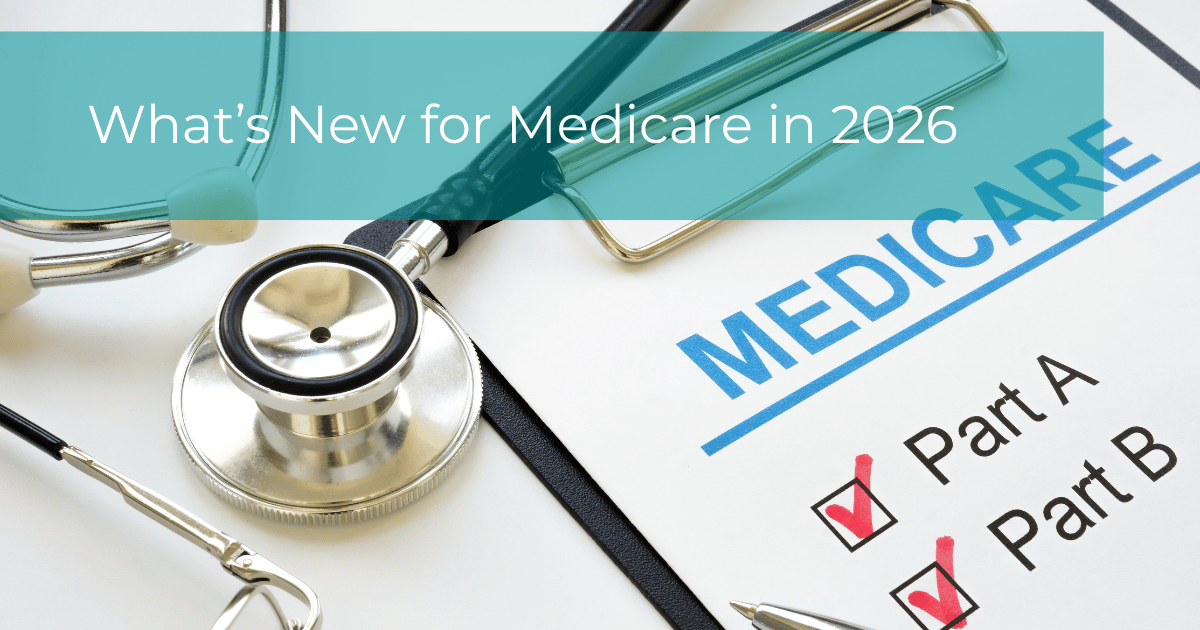As the Annual Enrollment Period (AEP) approaches, many Medicare beneficiaries are wondering what’s changing in 2026. Each year, updates to premiums, deductibles, coverage, and extra benefits can influence which plan is the right choice.
This year brings several important changes, including some service area reductions, that could lower costs or require you to review your current plan more closely. Understanding these updates before AEP begins on October 15 can help you make a confident decision about your coverage.
Key Changes to Medicare for the 2026 AEP
Medicare is evolving again in 2026 with adjustments designed to reflect inflation, expand coverage, and reduce out-of-pocket drug spending. While the changes may look small on paper, they can have a big impact on your healthcare budget and benefits.
Part B Premium and Deductible Adjustments
Both the monthly premium and deductible are expected to rise slightly for the 2026 enrollment period due to cost-of-living and inflation. Last year, the Part B premiums increased by $10.30 and deductibles increased by $17, according to the Centers for Medicare and Medicaid Services.
You can expect similar increases this year, but the exact numbers have been released as of August, 2025. Unfortunately, even modest increases can affect your yearly healthcare budget. For example, if the Part B premium rises by just $10 per month, that’s an additional $120 per year — something that can make a difference for retirees on a fixed income.
Part D Cost Reductions
A major shift comes with the Inflation Reduction Act, which introduced a $2,100 annual cap on out-of-pocket prescription drug spending at the beginning of 2026. This is especially significant for those with chronic conditions or high-cost medications.
For instance, a beneficiary paying $600 a month for prescriptions might spend more than $7,000 annually in the past. Starting in 2026, their total yearly cost was capped at $2,100.
Also starting in 2026, another key part of the act is set to begin. The first round of prescription drug costs negotiated by the Secretary of Health and Human Services goes into effect.
Medicare Advantage Flexibility
More Medicare Advantage (MA) plans are expanding extra benefits like dental, vision, and hearing coverage. Some will also provide wellness perks such as meal delivery, transportation, OTC allowances, and Flex cards for healthcare-related expenses.
Imagine a retiree recovering from surgery who receives meal delivery support through their plan or someone with hearing loss finally able to access affordable hearing aid coverage. These expanded benefits can make daily life easier and healthier.
Preventive Service Updates
Medicare is broadening coverage for screenings and wellness visits. This makes it easier for beneficiaries to stay proactive about their health and detect potential issues earlier.
For example, a newly covered screening could catch a health concern before it becomes more serious, saving both money and peace of mind.
Who Does the 2026 Medicare Changes Impact?
The changes to Medicare in 2026 will affect a wide range of people. Current beneficiaries will want to carefully review their Annual Notice of Change (ANOC) to see how premiums, provider networks, and drug formularies are shifting. Even small differences can mean higher costs or reduced access to preferred doctors and pharmacies.
New enrollees turning 65 in late 2025 or early 2026 will also be impacted, as these adjustments will apply to their very first year of Medicare coverage. For example, someone enrolling in January 2026 may be able to choose a Medicare Advantage plan that includes dental and vision benefits right away — something Original Medicare doesn’t cover.
Additionally, anyone considering switching from Original Medicare to a Medicare Advantage plan, or comparing Part D options during AEP, will need to pay close attention. The combination of rising costs and added benefits means the best plan for you in 2025 may not be the best option in 2026.
What You Should Do Before AEP
The Annual Enrollment Period is your opportunity to make changes to your plan or sign up for Medicare coverage, and being prepared is key. Before October 15, take time to:
- Review your Annual Notice of Change (ANOC) letter, which outlines exactly how your plan will change for 2026. This document is your first clue about whether you should shop for alternatives.
- Evaluate your healthcare needs and budget. Think about how premium increases, deductible shifts, or prescription drug costs could impact your total spending next year. For example, if you’re currently spending $250 a month on prescriptions, checking how the new Part D cap applies could save you thousands.
- Compare plans side by side. Look at Medicare Advantage and Part D drug plans in your area, focusing on coverage, provider networks, drug formularies, and extra benefits. Even if you’re happy with your current plan, you may find an option with lower costs or more valuable extras.
- Talk with a licensed Medicare advisor. Professional guidance can help you cut through the confusion and ensure that the plan you select truly matches your healthcare needs.
FAQs
Are Medicare Advantage plans adding new benefits in 2026?
Yes. Many plans are expanding supplemental benefits, offering more options like Flex cards, healthy food allowances, hearing aid coverage, and transportation support.
Will my monthly Medicare premium increase in 2026?
It’s likely. The Part B premium and deductible are expected to rise modestly for most enrollees, though the exact amount will depend on your income tier, and the amounts won’t be released until the end of 2025.
How does the drug cap from the Inflation Reduction Act work?
Starting in 2026, Medicare Part D beneficiaries will have an annual out-of-pocket spending limit of $2,100. Once you reach that amount, Medicare will cover the rest of your prescription drug costs for the year.
Ready to See What’s New for 2026?
Medicare changes each year, and the updates for 2026 make this AEP especially important. Whether you’re a longtime beneficiary or enrolling for the first time, reviewing your options now can help you secure the best plan for your health and budget. When you’re ready to review your options, schedule your free consultation.








